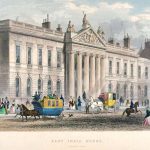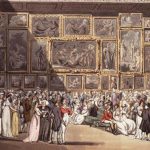Regency World
Site Development Notice – at the moment, this area of the site is being redesigned and full content has not yet been loaded. Updating will be complete by November 1st. Do enjoy the rest of the site!
The Regency world existed in revolutionary times and a rapidly shifting geopolitical landscape. The French Revolution had swept aside the old elite of the ancien régime, confiscated their wealth and property, and installed a new elite not predetermined by birth and land ownership, but primarily by individual ambition and achievement. In America, the Revolution rejected tone-deaf rule by a distant English monarch and established a constitution that enshrined the liberties and hopes of the individual above all else. The modern nation state was taking shape. In Europe, a groundswell of nationalism motivated populations to reject French rule, and in the aftermath of the Napoleonic Wars the map of Europe was re-made.
The African continent of the Regency era was largely made up of African kingdoms and peoples independent of European influence. Only the Portuguese had long-established colonies in coastal Angola and part of Mozambique. The most significant change occurred with Egypt’s conquest of Sudan between 1820-1824, adding some 1000 miles of territory to create an Egyptian empire roughly the size of Western Europe.
Muhammed Ali, the Egyptian ruler, had been campaigning since 1803 to expand power. He sought to replace the Mamluk knightly military slave class – made up largely of Turks, Armenians, Caucasians, Sudanese, and Copts – that had functioned as the military throughout the Islamic world since the middle ages. Muhammed Ali saw them as a potential threat to his absolute rule and sought to end Egypt’s dependency on the Mamluk army. In 1811, he exterminated the Mamluks in Egypt, and the survivors fled into Sudan. In addition to territory expansion along the Nile, one of the goals of his Sudanese conquest was to complete their elimination, the other was to replace them. To that end he aimed to capture a huge number of African slaves that could be trained as a modern army to secure his growing empire.
You are aware that the end of all our effort and this expense is to procure negroes. Please show zeal in carrying out our wishes in the capital matter.
— Muhammad Ali to his son in law the Defterdar Muhammad Bey Khusraw (23 September, 1823)
In 1818 in southern Africa, Shaka (c. 1787–1828) became king of the Zulu, then a small tribe of about 2000 people. He established a highly organized military and conquered surrounding peoples. During his reign from 1816-to 1828, the Zulu tribes, including the Mthethwa, were amalgamated into a huge Zulu Nation with the most powerful military force in the region. After defeating his main opponents, the Ndwandwe, King Shaka ordered the entire people to be exterminated, and during the Mfecane/Difaqane War he wiped out so many small opposing tribes Natal and the Transvaal were essentially depopulated.

Africa 1830
Zulu offshoots and copy-cat groups threw southern and central Africa into turmoil. Mass population movements and tribal regroupings impoverished the region and made farming impossible, so there was widespread famine. Africa’s “Golden Age” of Empires was over, but large swathes of the Continent were held by the Zulu and other mighty tribes.
European explorers and invaders had yet to expand their interests beyond pockets of control. In 1830, the French invaded Algiers, which had been under Turkish control as part of the Ottoman empire. And in 1836, some 14,00 Dutch farmers known as Boers rebelled against the policies of the British government, which had established the Cape colony in 1806, and trekked deep into the interior of southern Africa in a mass-migration known as the Groot Trek. They formed a republic of sorts in Natal, where the tribal wars of the Mfecane ‘Time of Troubles’ had opened up the lands. In 1843, the British annexed Natal and most of the settlers ended up in Transvaal where, ultimately, they formed the Republic of South Africa.
As peoples and nation states around the world grappled for power and territory, the Regency world also saw shifting cultural tides. In Europe the Romantic movement reached its peak and impacted most aspects of intellectual life. Romanticism influenced science, medicine, theology, philosophy, politics, the arts, and even the writings of historians. The Industrial Revolution was gathering momentum, and with it came rapid growth in trade and commerce, and the rise of a wealthy middle class.
By the time Queen Victoria’s reign began in 1837, the Regency world had furnished a transition that would see Britain control the “Empire on which the sun never sets,” the largest in history, spanning roughly a quarter of the world’s landmass.











